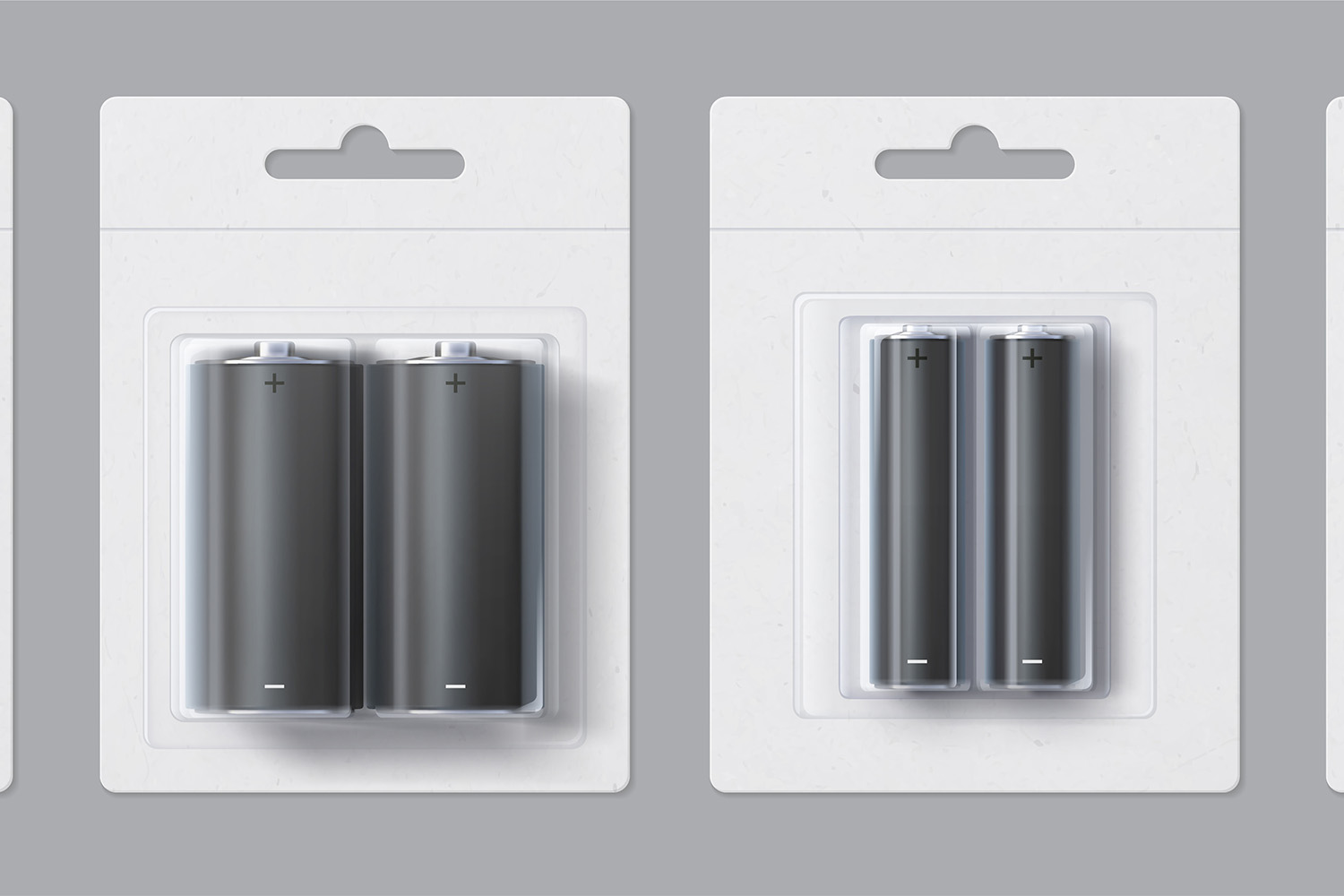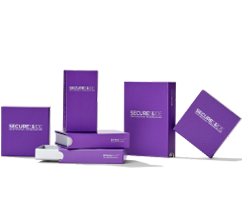
What Is Smart Packaging? Is It Better for Your Product?
The realm of product packaging has witnessed monumental shifts, transitioning from mere containers to becoming vital components of brand identity. Today, as we stand at the intersection of technology and tradition, another innovative stride is defining the packaging world: smart packaging.
At its core, smart packaging is a blend of science, technology, and design created to enhance the user experience, ensure product quality, and amplify brand engagement. As we journey into the digital age, it’s crucial to understand how this cutting-edge packaging solution can revolutionize your product’s presence in the market.
What Is Smart Packaging?
Smart packaging is not just about aesthetics; it delves deeper, integrating functionalities that offer more than meets the eye. It falls into two primary categories: active and intelligent packaging.
- Active packaging plays a role in maintaining or extending a product’s shelf life. It interacts directly with the product or the environment inside the package. For instance, some active packages release or absorb substances to prevent spoilage or maintain freshness.
- Intelligent packaging involves systems that can sense or measure the attributes of the product. This category might use sensors, QR codes, NFC chips, or other technologies to inform consumers about the product’s status, offer interactive experiences, or even aid in logistics and supply chain tracking.
Beyond these categories, the true essence of smart packaging lies in its ability to forge deeper connections. When a consumer scans a QR code to learn more about a product’s origin or when a temperature-sensitive label changes color to indicate the freshness of food inside, it’s smart packaging at work, bridging the gap between brands and consumers in innovative ways.
What Are the Mechanics of Smart Packaging?
Smart packaging is a fascinating blend of technology and design, each component meticulously chosen to serve a specific purpose. Here’s a dive into this revolutionary approach’s inner workings and mechanics.
Sensors and Indicators
At the heart of many intelligent packaging systems lie sensors. These tiny devices can detect changes in the environment, such as temperature, humidity, or even the presence of certain gasses.
For example, in food packaging, sensors can alert consumers if a perishable item has been exposed to conditions that might compromise its safety or freshness. Color-changing labels or indicators work in tandem with these sensors, providing a visual cue about the product’s status.
QR Codes and NFC Chips
These allow for real-time interaction with consumers. Scanning a QR code with a smartphone can lead a user to a website, video, or any form of digital content the brand wishes to share. NFC (near field communication) chips take this a notch higher.
They can store information, initiate actions on the user’s device, and even facilitate transactions. For instance, wine bottles equipped with NFC tags can provide users with details about the vineyard, tasting notes, or pairing suggestions, enhancing the consumer experience.
Augmented Reality (AR) Integrations
AR in smart packaging can transform a static package into an interactive experience. Through specialized apps or AR platforms, consumers can point their devices at the packaging to access a host of multimedia content — from 3D visualizations of the product to tutorials or even games.
Anti-Counterfeiting Features
One of the pressing concerns in many industries is product duplication. Smart packaging can combat this by incorporating features like holograms, encrypted QR codes, or specialized RFID (Radio Frequency Identification) tags that are difficult to replicate, ensuring that consumers receive genuine products.
Connectivity and Data Collection
Smart packaging can be integrated into broader IoT (Internet of Things) systems. This means they can relay data back to manufacturers about how and when products are used, providing invaluable insights for future product development or marketing strategies.
In essence, the mechanics of smart packaging revolve around enhancing user engagement, ensuring product integrity, and providing brands with a means to connect, inform, and delight their consumers in ways previously unimagined. As technology continues to evolve, the possibilities and potential applications for smart packaging seem virtually limitless.
What Are the Benefits of Smart Packaging?
As the packaging landscape shifts towards a more interactive and technologically advanced paradigm, the benefits of smart packaging become increasingly evident. The merits are vast and multifaceted, from enhanced user experience to bolstered brand integrity.
Let’s delve into some of the most salient advantages:
Enhanced Consumer Engagement
With QR codes and augmented reality, smart packaging turns the otherwise passive act of examining a product into an immersive experience. By pointing a device at the packaging, consumers can be transported into the world of the brand, accessing exclusive content, tutorials, and more.
This interactive engagement can strengthen brand loyalty and foster a deeper connection between the consumer and the product.
Assurance of Product Integrity
Anti-counterfeiting measures embedded in smart packaging ensure consumers receive genuine products, protecting them from potential harm and brands from potential litigation. Such features can be game-changing in sectors like pharmaceuticals or high-end luxury items where counterfeits are rampant.
Sustainability and Environmental Concerns
Incorporating innovative materials like the ones used in our SecureSack ECO can serve dual purposes: offering interactivity while remaining eco-friendly. The marriage of sustainability with advanced tech is not just a nod to the future; it’s a necessity, meeting consumer demand for products that are as kind to the environment as they are innovative.
Safety and Compliance
Safety becomes paramount, especially in industries catering to sensitive demographics, like the child sector. Smart packaging can be designed to be child-resistant, ensuring products stay out of the wrong hands. Our range of child-resistant packaging solutions exemplifies this, ensuring safety without compromising on the interactive features that smart packaging offers.
Real-Time Data and Insights
One often overlooked benefit is the ability of smart packaging to gather real-time data. By monitoring how consumers interact with products, brands gain valuable insights that can inform marketing strategies, product development, and inventory management.
Extended Shelf Life and Reduced Waste
Sensors in smart packaging can monitor environmental conditions, alerting consumers or retailers if conditions deviate from the optimal. This can extend the shelf life of perishable items, reduce waste, and ensure consumers receive products at their best.
Elevated Brand Perception
Smart packaging signals to consumers that a brand is forward-thinking, innovative, and invested in providing value beyond the product itself. This can differentiate a brand in a crowded market, making it more memorable and appealing to tech-savvy consumers.
What Are the Potential Challenges of Smart Packaging?
Every innovation, as transformative as it might be, comes with its set of challenges and limitations. Smart packaging, while teeming with potential, is no exception.
Understanding these challenges ensures that businesses can navigate them effectively and harness the full potential of this technology.
Cost Implications
The integration of technology into packaging can elevate production costs. This may pose challenges for smaller brands or those looking to keep retail prices low. However, with solutions like Dymapak’s range of cost-effective smart packaging options, brands can strike a balance between innovation and affordability.
Consumer Privacy Concerns
As smart packaging often involves data collection, there’s a heightened emphasis on ensuring consumer privacy. Brands must be transparent about data usage and storage to avoid legal and reputational pitfalls.
Complexity in Recycling
With the integration of electronic components, recycling smart packaging can become more intricate. It’s crucial to design with end-of-life in mind to avoid exacerbating environmental issues. At Dymapak, our commitment to sustainability means we continuously strive to develop smart packaging solutions that are as eco-friendly as possible, ensuring that innovation doesn’t come at the planet’s expense.
Need for Consumer Education
The interactive features of smart packaging require a certain level of consumer awareness. Brands may need to invest in educating their target audience to ensure optimal utilization of the packaging’s smart capabilities.
Technical Failures
Like all tech-centric solutions, malfunctions or technical hitches are risky. Ensuring rigorous quality control and providing consumers with easy troubleshooting guides can mitigate this challenge.
In navigating these potential hurdles, it’s crucial for brands to partner with experienced packaging providers. Leveraging the expertise and innovative solutions of companies like Dymapak can help circumvent challenges and maximize the potential of smart packaging.
So, Is Smart Packaging Right for You?
In an era where the line between digital and physical blurs, smart packaging presents a golden opportunity for brands to elevate consumer engagement. However, it’s not just about hopping on the tech bandwagon; it’s about discerning if this aligns with your brand ethos and target audience.
At Dymapak, we believe that smart packaging can be a transformative tool with the right approach. It’s about harnessing its capabilities while staying true to core values, ensuring that innovation drives engagement and encourages trust. Your packaging tells a story; let’s make it a compelling one.
Sources:
”Smart” packaging preserves food and enhances safety | Harvard News
How Does Augmented Reality Work? | HBR
Technology in deep time: How it evolves alongside us | BBC Future
Brand Loyalty: What It Is, and How to Build It | Investopedia


